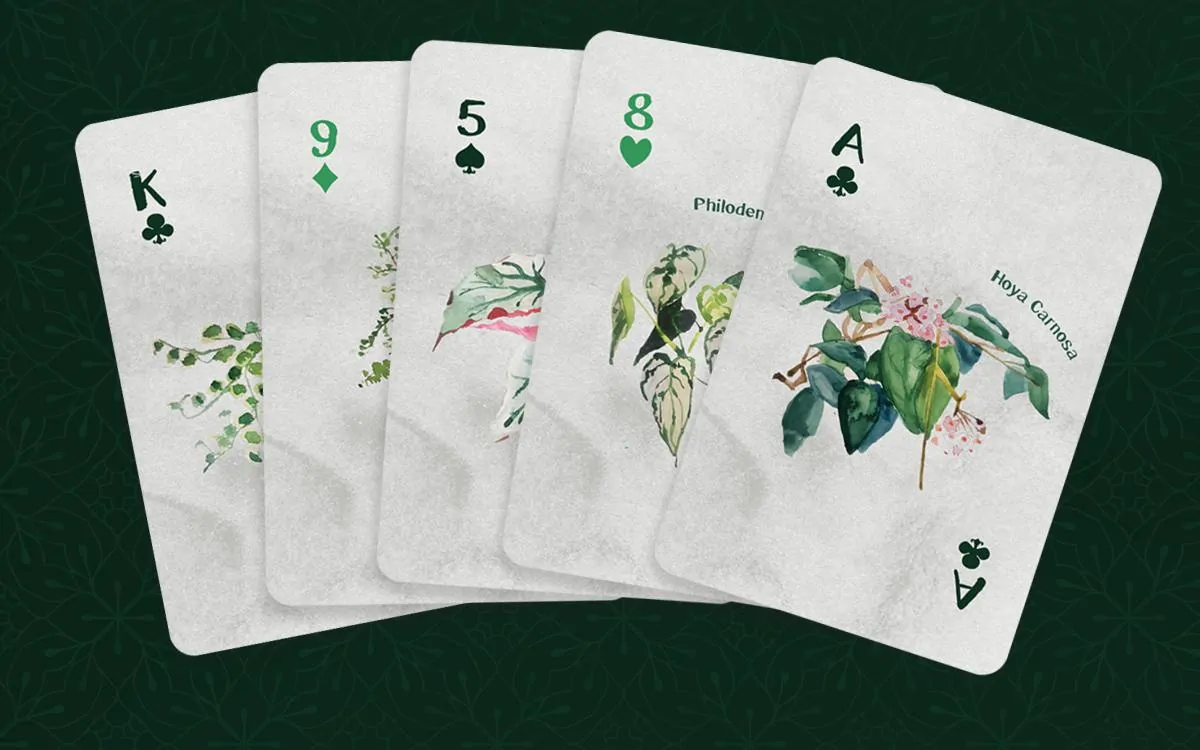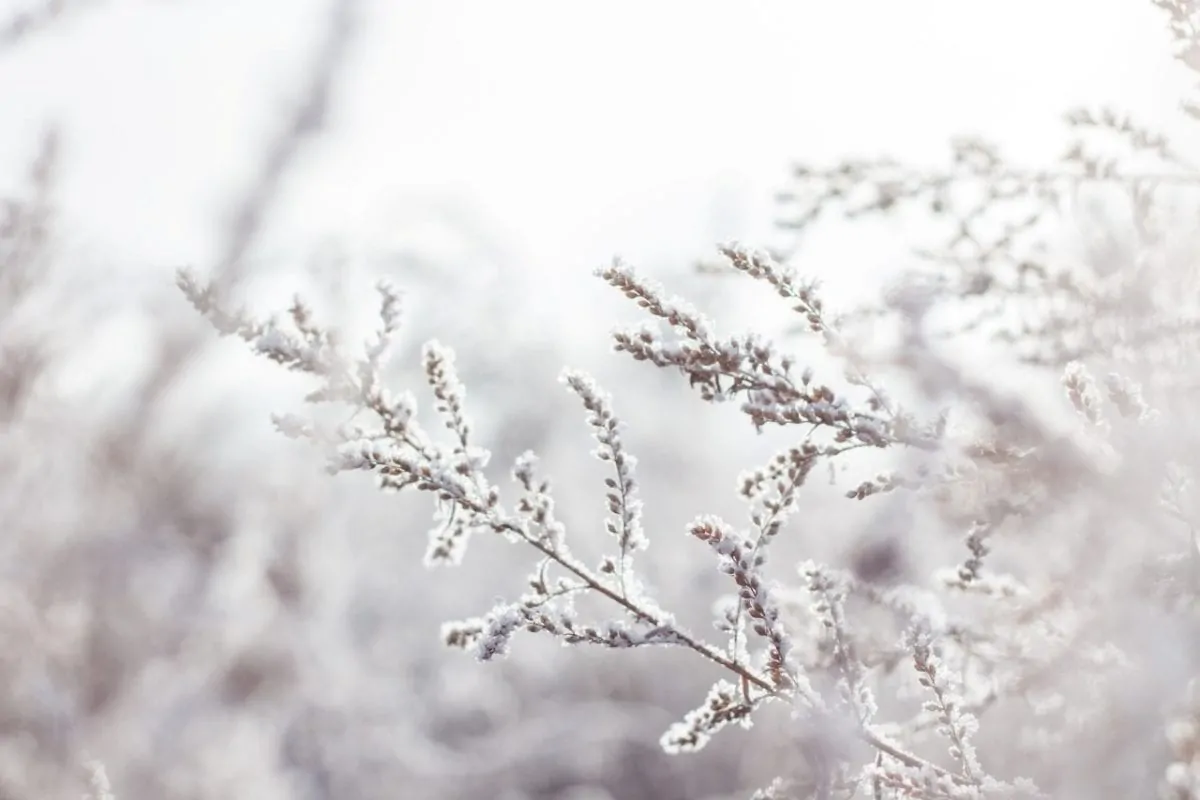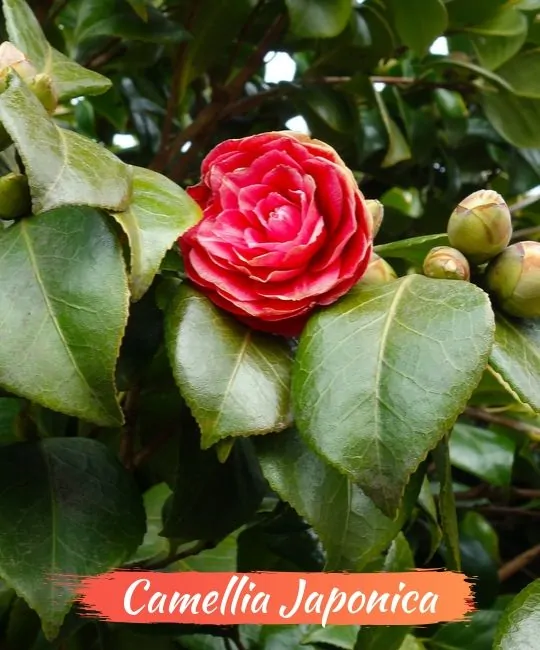


Have you ever noticed how winter flowers can just brighten up a room? If you dread autumn because greenery begins to fade into a lovely memory, don’t fret about it.
Cold-tolerant plants and flowers are capable of turning your home into a winter wonderland. In fact, the variety of winter flowers on today’s market is so vast, colorful and diverse, that you don’t necessarily have to stick with traditional poinsettia to create your very own Christmas spirit.
We’ll start off with a couple of winter flowers that adapt beautifully to indoor conditions during winter time. And we’ll continue with those that thrive in outdoor temperatures. Be sure to check out your hardiness zone location.
Are you looking for a plant that looks stunning all year round but truly shines during the cold season? These indoor winter flowers and plants might just be the thing!
Colorful? Oh, yes! These splashy blooms light up rooms, whether they’re white, yellow, pink, purple or red. Schlumbergera is actually a hybrid resulting from two plants that grow in Brazilian rainforests and it earned its popular name because it only blooms around Christmas.
Christmas cactus prefers indirect sunlight and humidity. That stated, beginning 6 to 8 weeks before Christmas, relegate your plant to a dark environment between 12 and 14 hours daily to achieve the showiest display.
Pay attention to its watering schedule – too much water can lead to root rot, while too little could mean fewer healthy flowers. Just like with most other succulents and cacti, it’s generally better to underwater this plant. However, it requires constantly moist soil during the flowering season.
Schlumbergera can also be grown outdoors in USDA zones 9 and above.
It’s the most popular Christmas plant, a cultivar belonging to the Euphorbia pulccherimagenus/family. The look-alike blooms are actually young leaves that grow in clusters at the end of each branch.
Sub-tropical red poinsettias are the quintessential holiday plant. However, you can find Poinsettia in myriad colors these days, including cream, peach, pink, lemon, white and gold. Named for Dr. Joel R. Poinsett, a former U.S. ambassador to Mexico, poinsettia prefers sunny windows in winter.
Here’s an example of cold weather flowers that comes with both a weird name and strange looks!
The Bat flower originates in jungles, but it happily makes its home indoors, albeit in an impressively-sized pot because it can grow as tall as 3 feet. Examine this bloom up close and marvel at the network of tiny buds, thin offshoots, and mysterious shades of black.
Bat flowers love filtered shade, soil that’s moist but not soggy, and because it’s a jungle plant, lots of humidity will help it flourish indoors, too.
These awesome plants that survive winter outside peak around Christmas and New Year. Pick any that fits the climate you live in to liven up your front or back yard during the cold season.
This member of the cool-season flowers family is known by many names, including the Harlequin Glorybower and its formal name, Trichotomum.
Classified as a shrub, Clerodendrum can grow to 12 feet in an outdoor garden, and once you transfer it to a container, it will remain a tall and stately member of the winter flowers family.
The little blooms on this flowering bush are distinct: they look like tiny magenta stars with dark blue centers.
When wintering, keep Cleodendrum containers moist and give it at least 6 hours of sun daily.
If you prefer another member of this glorious family, check out its cousin, the Bleeding heart vine (Clerodendrum thomsoniae).
Vezi această postare pe Instagram
Not everyone falls in love with this exotic plant, but if you want to impress fellow winter plant lovers, this strange-looking bloom with its dramatic center shoot will enhance your reputation.
Devil’s Tongue belongs to an equally wicked genus (Amorphophallus) that includes the voodoo lily and corpse plant.
As a houseplant, you can expect Devil’s Tongue flowers to flourish as long as you are a hospitable host.
These cool-season flowers love medium-to-bright indirect light for about 4 hours daily, but don’t expose these devils to direct sun or you risk scalding the plant’s fragile leaves.
Humidity can be critical to this plant’s display, so placing a humidifier nearby is a good idea.
Are you passionate about British romance tales? You owe it to yourself to try your hand at growing Erica, the family name for heather and heath.
In fact, the Ericaceae family is so robust, diverse and prolific, there are 605 species that fall under its umbrella.
Allow plenty of room for these plants to spread out (especially if you’re eager for a voluminous heather display), and plan to re-pot as the plant grows.
Good drainage is essential, and you can ensure healthy growth by potting with soil formulated just for this genus.
These plants love the sun, but in case that’s in short supply in your geographic area, partial sun exposure will do.
Poppies have gotten a bad rap because people associate them with opium harvests and drug lords.
Happily, the Iceland Poppy (Papaver nudicaule) is so benign and pretty, it’s legal to grow them anywhere.
Enjoy white, yellow, pink and red blooms within more than 80 varieties of this showy plant. Iceland poppies grow to varying heights, so give these beauties lots of room to thrive.
Botanists recommend installing multiple plants, spaced 8- to 12-inches apart, in huge pots to produce a dramatic display.
To make sure your Iceland poppies don’t slump over, keep stakes on hand to prop them up – just in case you’re the lucky recipient of the tallest versions of these Christmas flowers.
A member of the Calendula family, these easily-recognizable blooms hold their own among other colorful plants, given the cheery range of orange, yellow and red blooms currently on the world market.
These flowers don’t have to be deadheaded when mature to keep the rest of the plant in great shape, but moist soil is extremely important.
Gardeners recommend balancing this plant’s water system by drenching and then allowing soil to dry out before adding more water.
If you’re an environmentalist and you compost, mixing your waste with garden soil (half-and-half) will produce marigolds that do more than brighten up window ledges; you can add them to your salads, too!
If you’re eager to see fairly immediate results from winter flowers, plant Nemesia. These fast bloomers have colorful and abundant flowers.
There are 50 species of Nemesia and your solid color choices are spectacular: blue, pink, violet, brown, cherry, yellow, and white. Some of them even produce patterned flowers and color mixes!
A member of the Scrophulariaceae family, Nemesia like full sun and well-drained soil. Often compared to look-alike pansies, these blooms measure between 6 inches to 3 feet tall.
The best part of raising Nemesia? These are likely to be the most low-maintenance flowers in your winter garden!
Expect compliments if you intend to grow Protea over the winter because the blooms are so colorful and dramatic. You can choose from over 80 members of the Protea family for your winter garden.
Give them adequate drainage, lots of sunshine and place them in an area with circulating air.
Experts advise beginners say that anyone who is capable of growing a cactus will have success with any of the plants belonging to the Protea family.
Pro tip: If you can get your hands on a Rocket Pincushion (Leucospermum reflexum), you’ll be the envy of indoor gardeners because this type of Protea is extremely rare.
Originating in the Canary Islands, Cineraria (Pericallis cruenta) types have been called “tender perennials” that may not last as long as other winter house plants.
But during their glory, you’ll enjoy displays of daisy-like flowers that can grow as tall as 24-inches.
Surrounded by a proliferation of bright green leaves, these blooms can grow to be 5-inches in circumference and since they bloom in late winter.
You’ll enjoy a bright holiday treat that requires only a mix of loose peat moss and potting soil to keep these plants happy.
Expose your Cineraria to either filtered or bright sunlight and it won’t take long before blue, red or purple blooms unfold just in time for the Christmas holiday.
Can’t decide between a decorative and a medicinal shrub for your winter garden? Witch hazel has you covered.
The fiery flowers of Hamamelis Virginiana are great for alleviating inflammation and irritation – not to mention they’re a sight for sore eyes as well!
View this post on Instagram
This shrub is one of the most adaptable plants – it thrives in full sun or partial shade.
It’s also one of the most fragrant winter shrubs, with its sweet scent enveloping acres of land.
These stunning winter flowers last from February to around May and come in a plethora of colors. The pictures speak for themselves!
Also known as lily of the valley or Japanese Pieris, the Pieris Japonica shrub is a winter wonder. Although a bit finicky when it comes to soil type and light exposure, these will definitely stand out.

There are over 30,000 cultivars within the Camellia Japonica species with flowers ranging from 1.5 to 5 inches across and from creamy shades of white to pink and deep red.
Definitely one of the easiest winter flowers to care for, Jasminum Nudiflorum can be used as ground cover, to hide an unattractive fence or wall, or trained to grow on trellises.
I love the coloring on these beautiful winter flowers! Most of them come in deep blue and shades of purple, but some varieties also include soft cream shades.
Some of the easiest winter flowers to grow in your garden, cyclamen are some of the first winter bloomers. They mostly impress through lively-colored flowers ranging from gentle cream-pink to fuchsia, but many gardeners fell in love with their green and silver foliage, too.
These delicate blooms are common in winter gardens across most USDA zones and a simple glance will also tell you why – they’re just stunning!
Although not the most resilient as perennials, these will do great as annuals.
Although a bit challenging to grow as perennials, primulas are some of the most beautiful blooms in any winter garden. Flowers generally appear at the end of winter, when the soil is still at least partly frozen, and last for a while if planted in shaded spots.
Final Thoughts
Did you find your perfect winter flowers for this season? My personal favorite is the Iceland poppy – such a delicate, yet hardy little bloom! <3

Monthly updates on your favorite plants and how to keep them alive, delivered straight to your inbox!
Privacy Policy
This privacy policy outlines what info we gather from our visitors and contributors, the tools we use to collect, store, and protect it, and how we use this information.
Like any other website on the World Wide Web, YouHadMeAtGardening.com records some info about you and your device during your visit. This privacy policy outlines how our team gathers, stores, protects, and uses the information it gathers from visitors of the YouHadMeAtGardening.com website.
By continuing to use this website, you implicitly agree to this policy; if you do not agree to some or all of the procedures listed on this page, you can opt out at any time, however, you might not enjoy the intended browsing experience.
Our team reserves the right to alter this privacy policy with no prior notice to you. However, if the alterations made affect your personal data in any way, you will be notified immediately by email, on our homepage, or here.
Information YouHadMeAtGardening.com Collects
Our systems gather personally and non-personally identifiable information from visitors of the YouHadMeAtGardening.com website.
The only personally identifiable information we collect is your name and e-mail address only when leaving comments if you’re a visitor, or when submitting content and leaving comments, if you’re a contributor.
However, if you are not comfortable with providing your personally identifiable information to us, you can also use an alias instead of your real name and e-mail address without breaking any rules or regulations currently in use.
Note: If you submitted a comment using your personally-identifiable information and want it removed, you can always contact us and we will remove your info in 30 days.
The non-personally identifiable information we collect is your IP address, ISP information, device and browser info, and your browsing patterns – specifically the pages and websites you visit. This information cannot be used to track down your identity.
How We Collect Your Information
We use the following tools to gather personally and non-personally identifiable information from visitors and contributors:
• Cookies: these tiny text documents contain unique identifiers that are stored in your computer after your expressed consent. Cookies collect non-personally-identifiable information about your browsing patterns, which helps us pinpoint the areas of our website that require extra work and the areas that fully meet your needs.
• Log files: These tools record browser and device information, browsing patterns, websites that referred you to the YouHadMeAtGardening.com website, pages our website referred you to, and other types of non-personally identifiable information.
• Sign-up forms: these requests only come up when registering for our newsletter and is the only way our team collects personally-identifiable information from visitors.
How We Protect Your Information
All information we gather, both personally and non-personally identifiable, is stored in systems and databases managed only by the YouHadMeAtGardening.com team. We use the latest security measures to make sure the information you provide and the information we gather stays confidential, such as encryption, user behavior monitoring, and a series of managerial procedures.
How We Use Your Information
We only use your personally and non-personally identifiable information to improve the quality of the website and your browsing experience while here. We want to know which pages and sections of our website satisfy your needs and are of real value to you and which ones need improvement so we can make the proper adjustments. We also use your information to make sure the website is properly displayed on your device and browser.
If you choose to opt in for our newsletter, we will also use your information to keep in touch.
However, know that the YouHadMeAtGardening.com team will never share your information with other parties in exchange for financial rewards or any other kind of benefits. Some third parties might get very limited access to your info, but only to your non-personally identifiable information and only as we described above.
The personally identifiable information you provide is strictly confidential, therefore we will not share it with anyone.
Advertising
This Site is affiliated with CMI Marketing, Inc., d/b/a CafeMedia (“CafeMedia”) for the purposes of placing advertising on the Site, and CafeMedia will collect and use certain data for advertising purposes. To learn more about CafeMedia’s data usage, click here: www.cafemedia.com/publisher-advertising-privacy-policy
